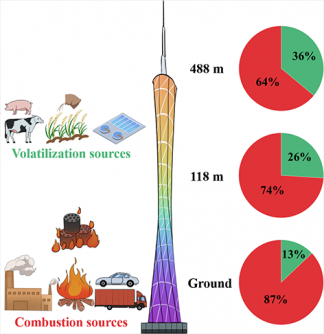URGENT UPDATE: A groundbreaking study from Jinan University reveals that combustion-related activities are the primary source of atmospheric ammonia in the Pearl River Delta (PRD), China. This research, published in Frontiers of Environmental Science & Engineering, highlights the escalating environmental challenge posed by ammonia emissions, which are critical precursors to harmful fine particulate matter (PM 2.5).
The study, conducted at the prestigious Canton Tower, the tallest structure in the PRD region, assessed ammonia concentrations at three distinct atmospheric heights: ground level, 118 m, and 488 m. Researchers collected samples during a focused campaign, revealing average ammonia concentrations of 2.7 ± 1.4, 3.0 ± 1.8, and 2.6 ± 1.7 μg/m3 respectively. Notably, these figures showed no significant variation across the heights (p > 0.05). However, a significant correlation was found between the stable nitrogen isotope composition of ammonia and atmospheric height (p < 0.05). The implications of these findings are profound. The researchers utilized a Bayesian Isotope Mixture Model to determine the sources of ammonia emissions. The results indicate a concerning dependence on combustion sources, with contributions at ground level as follows: 9.9% from agriculture, 8.3% from waste, 29% from vehicles, 16% from biomass burning, 25% from ammonia slip, and 12% from coal combustion. Remarkably, the sources at 488 m showed relative stability due to limited local influences, underscoring the critical need for addressing ground-level emissions.
This urgent revelation calls attention to the environmental and public health risks associated with ammonia emissions in densely populated regions like the PRD. As ammonia contributes significantly to PM 2.5 formation, which is linked to respiratory diseases and other health issues, addressing these emissions is paramount.
Experts emphasize the need for immediate action to mitigate the impact of combustion sources. Increased regulation and innovative practices in agriculture and transportation may be necessary to combat this growing environmental concern.
For those interested in a deeper dive into the research, the complete study is available at: https://journal.hep.com.cn/fese/EN/10.1007/s11783-025-1997-4.
Stay tuned for more updates on this developing story, as the implications for air quality and public health continue to unfold in the Pearl River Delta region.






